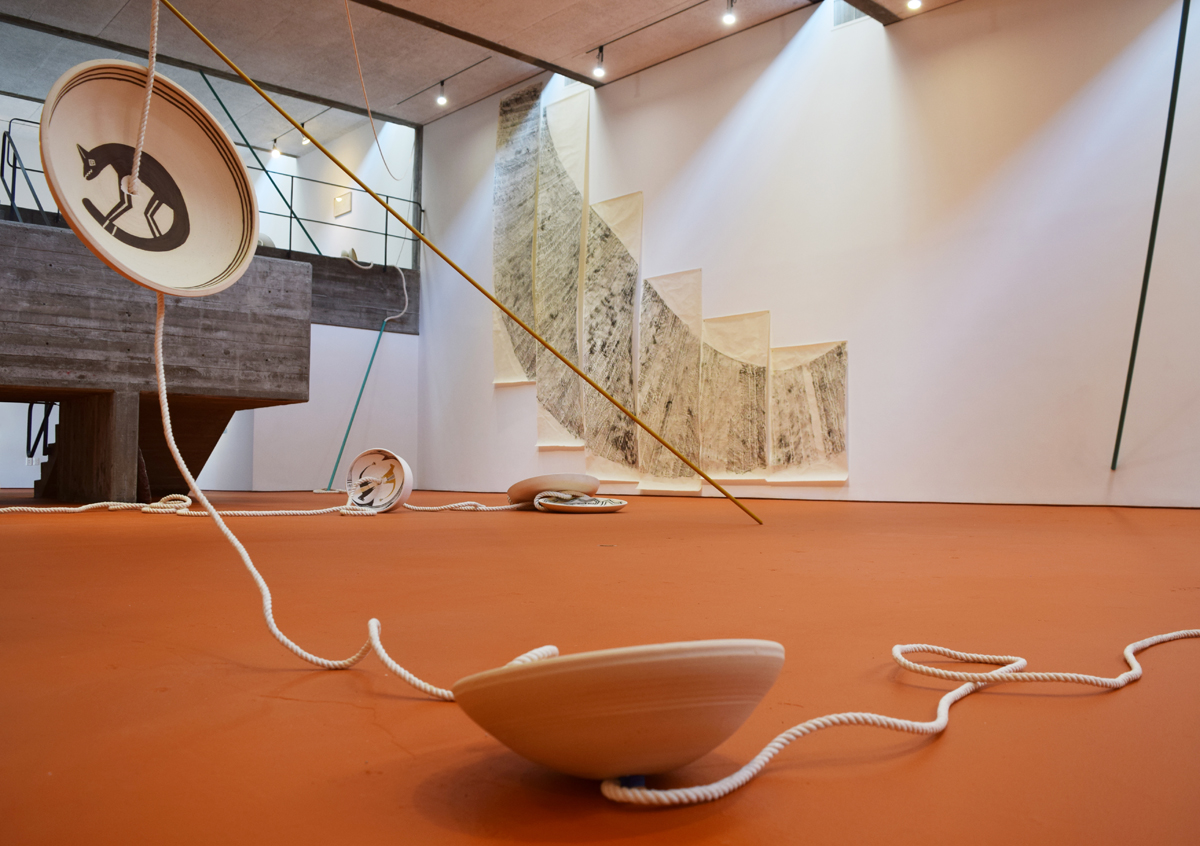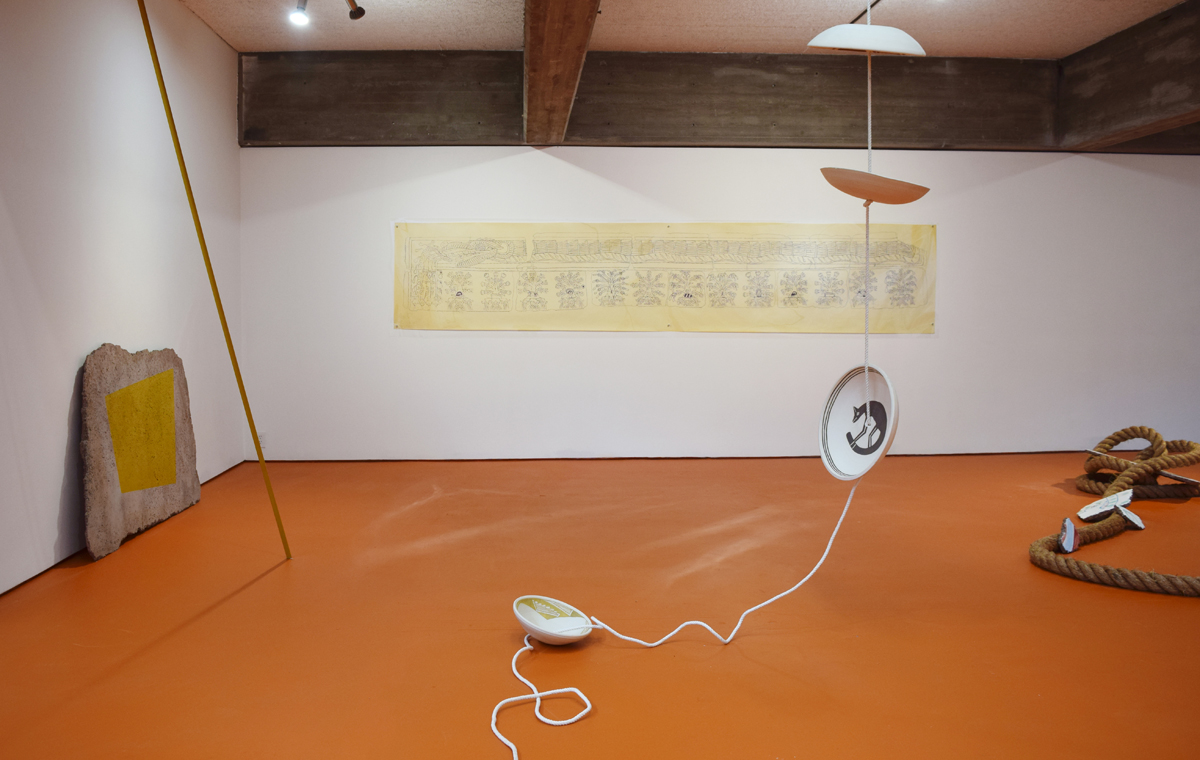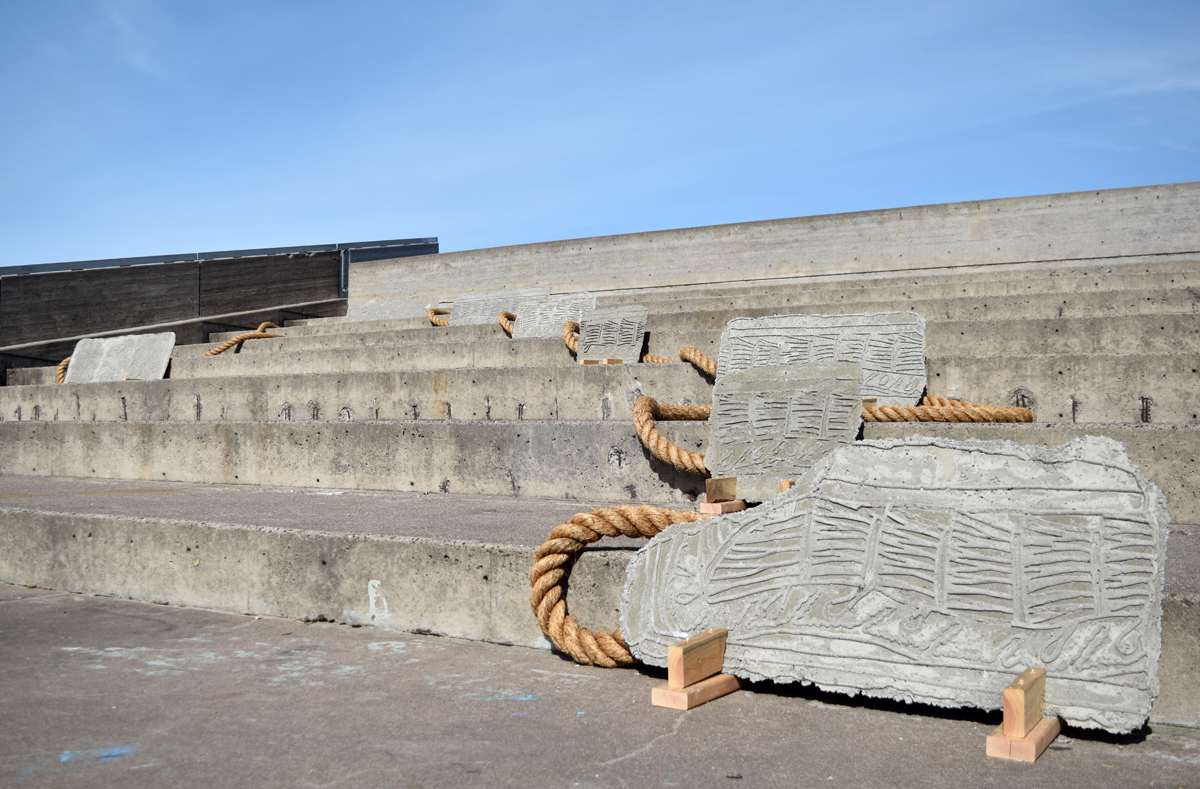I try not to put the word “history” in my headlines, under the (likely correct) assumption that any mere mention of the subject causes eyes to glaze over. And once the eyes glaze over, the understanding is, good luck getting those readers to click through. So I tricked you, and didn’t put “history” in this headline. Because this time, “history” isn’t a staid and boring lesson in the way things were — it’s a space filled with gaps, mysteries, conflicting stories and living legacies.

“Every time you try to read history you make it new,” says Mexican artist Mariana Castillo Deball. Her solo exhibition Feathered Changes, Serpent Disappearances, on view in SFAI’s Walter and McBean Galleries through July 30, is filled with references to and replications of historical things: ancient Mexican murals, Mayan and Mimbres pottery and the chance-based artworks of the late composer John Cage. In her hands, these disparate threads weave together with an ease that makes the viewer almost unaware they’re being lead through an alternate retelling of the dreaded subject of “history” and its artifacts.
Assisted by recent grad and SFAI + Kadist Fellow Christopher Squier, Deball’s exhibition delves into the collections of two Bay Area institutions — the Fine Arts Museums of San Francisco and Crown Point Press. The former houses the Harald Wagner Collection of Teotihuacan Murals, a surprise bequest to the museum of fragmented wall paintings looted from the walls of the ancient Mesoamerican mega-city of Teotihuacan. The latter published Cage’s experiments in printmaking from 1978 to 1992, including a series titled Changes & Disappearances, in which each printmaking decision was made using a computerized algorithm based on the I Ching, an ancient Chinese divination text.
For Deball, her interest in the Teotihuacan murals (specifically Feathered Serpent and Flowering Trees, a mimeograph reproduction of which is on view in the SFAI exhibition) and Cage’s Changes & Disappearances (the 27th iteration of which is also on view) isn’t just about the artworks themselves, but the institutions that preserve them.

A series of fresco fragments positioned throughout the SFAI exhibition are scaled-up versions of “crumbs” kept in storage at the de Young, illegible chunks of the mural that retain their status as archaeological artifacts within the museum’s collection. With the help of SFAI students, Deball created original frescoes with cement, lime plaster and pigment to mimic the de Young’s “crumbs.” Yet they also show evidence of aesthetic decision-making and elements of Cage-like chance; Deball reduces some patterns to just one or two colors, with changes in scale rendering the minuscule hefty.
Such translations occur with satisfying regularity in Feathered Changes, Serpent Disappearances. A literal “through line” of varying thicknesses of rope runs from the steps outside the upstairs gallery down to the main space, where the floor, painted a rich terra-cotta hue of “copper orange,” puts all frescoes, pottery, ropes and brightly painted poles into sharp relief.
Outside on concrete steps usually reserved for chain-smoking art students, fragmented cast concrete reliefs reproduce the larger-than-life patterns of Feathered Changes, Serpent Disappearances. Back inside, Deball ties (literally; there’s rope everywhere) SFAI’s Brutalist architecture to the history of archaeological rubbings with a giant rubbing of the building’s conical skylights.

For all the objects in Deball’s exhibition, the presentation is as much about absence as it about making connections between disparate cultures, histories and themes. Of the Teotihuacan murals bequeathed to the Fine Arts Museums by Harald Wagner, the majority were repatriated to the Mexican government after many years of negotiations, but a dissonance remains between the original site of the looting and the multiple collections that now house the displaced murals. Similarly, reproductions of Mayan and Mimbres pottery scattered throughout the exhibition all feature “kill holes,” punctures through their centers that render the ceramics useless as functional objects and reserve them — some archaeologists believe — for funereal purposes.
For Deball, the distance between what is certain, what is assumed and what will perhaps never be known about the past is a fascinating and fruitful space. Like Cage, she embraces chance and experimentation, balancing historical research with graceful aesthetic decisions that make Feathered Changes, Serpent Disappearances a thoroughly invigorating art viewing experience and painless history lesson all in one.
Feathered Changes, Serpent Disappearances is on view at SFAI’s Walter and McBean Galleries in San Francisco through July 30, 2016. For more information visit sfai.edu.